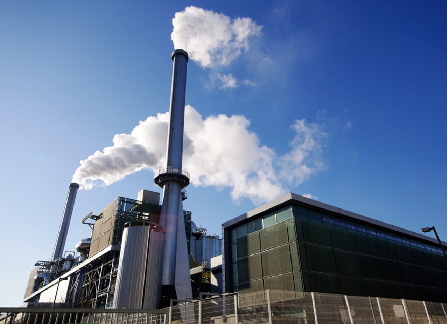Chemicals in my Water in Drilling Area
February 29, 2012Impacts of Gas Drilling on Human and Animal Health
March 1, 2012By Mark Jaffe, The Denver Post, February 26, 2012
High levels of winter ozone air pollution have been recorded in a Utah oil and gas field — after the phenomenon was seen in Wyoming — raising concerns that such pollution could become more widespread.
A team of scientists is combing the Uintah Basin to determine the link between the area’s 10,000 oil and gas wells and ozone levels, which in 2011 were higher in eastern Utah than in New York City.
“What we are seeing in the Uintah Basin and (Wyoming’s) upper Green River (Basin) has implications for the entire West,” said Brock LeBaron, the Utah Department of Environmental Quality’s manager of the Uintah study.
Ozone pollution — which can impair breathing — has been an urban and summertime problem, but in the West, it has emerged as a rural winter issue.
As drilling picks up, particularly in areas such as Colorado where shale oil has been discovered, the concern is that the problem could grow.
The Piceance Basin in northwest Colorado, for example, is an area that could be susceptible to the snowy conditions that created winter ozone in the Utah and Wyoming incidents, researchers say.
A recent study of the Denver-Julesburg Basin in northeastern Colorado by the National Oceanic and Atmospheric Administration found elevated levels of methane coming from well sites. NOAA scientists say initial results from another study show high concentrations of butane, ethane and propane in Erie, east of Boulder, where hundreds of natural-gas wells are operating.
“We are finding a huge amount of methane and other chemicals coming out of the natural-gas fields,” said Russell Schnell, a NOAA scientist in Boulder.
“It still has to be confirmed,” Schnell said. “But we may have to take a closer look at all oil fields.”
Industry groups say they are also concerned about the ozone issue.
“There is a lot we don’t understand about wintertime ozone; we need this research,” said Kathleen Sgamma, vice president for government affairs at the trade group Western Energy Alliance.
The industry is participating in the Utah study. “We’ve gotten great cooperation,” said Gabrielle Petron, a NOAA researcher driving around the basin in a truck equipped with a mobile lab.
In Wyoming, researchers found the winter phenomenon appears to be created when a heavy snow cover, which acts as a reflector enhancing the sunlight and heat in the atmosphere, helps to form an inversion that holds the emissions in a confined area.
NOAA’s Schnell said that it is also suspected that the snow acts “as a huge sponge” that absorbs chemicals as the temperature drops at night and releases them as the day warms.
Ozone, a corrosive gas that can exacerbate asthma and other respiratory diseases, is created when volatile organic compounds, such as gasoline fumes, and nitrogen oxides, such as power plant emissions, mix with heat and sunlight.
While ground-level ozone is a health threat, naturally created stratospheric ozone is vital to protecting terrestrial life from the Sun’s deadly ultraviolet radiation.
In the winter of 2005, ozone levels reach 120 parts per billion for an hour in rural Pinedale, Wyo. The town of 1,400 is surround by 2,900 gas wells in the Jonah and Pinedale Anticline fields.
After the incident,ozone was detected by state air equality agencies around the West.
In 2010 and 2011, ozone levels in the Uintah Basin soared. The peak value in 2011 was 139 parts per billion, according to Utah officials.
That was 85 percent higher than the federal health standard, 75 ppb, and above the 99 ppb peak for 2011 in the New York metropolitan area, according to New York Department of Environmental Conservation data.
This winter, NOAA and University of Colorado at Boulder researchers have fanned out across the Uintah Basin. They are erecting sampling towers, measuring emissions using aircraft and going from site to site in Petron’s mobile laboratory.
“They are tracking upwind, downwind,” said Schnell. “It will be the best-studied basin in the world.”
In Vernal, Utah, population 9,000, the biggest town in the basin, the oil fields and truck traffic are the prime sources of emissions, Petron said. The 500-megawatt Bonanza Power coal-fire plant at the edge of the basin must also be assessed, he said.
Researchers haven’t been able to measure ozone and atmospheric chemistry because there is currently no snow, and a second field study will have to be done.
“The goal is to be able to figure out what you need to control,” said Carl Daly, air program director for the Environmental Protection Agency’s Denver office.
“Wyoming has reduced emissions, but they still had a bad year in 2011,” Daly said.
The Wyoming Department of Environmental Quality and the industry launched initiatives to cut emissions.
The agency estimates that emissions have been cut by more than 20 percent.
The industry also has made more than $100 million in investments to curb emissions and set up a system to cut activity on days when ozone is likely to form.
“We are using natural-gas-fired rigs instead of diesel, we are cutting fugitive emissions, and we installed incinerator-grade combustors at well sites,” said Douglas Hock, a spokesman for Encana Corp.
Encana has proposed drilling another 3,500 wells in the area.
Even with the reductions and investments in March 2011, there was a 124 ppb ozone reading.
“They don’t understand what is going on yet,” said Elaine Crumpley, 64, a Pinedale resident and spokeswoman for Citizens United for Responsible Energy Development.
“They studied the problem for five years here and still don’t have answers,” Crumpley said. “I hope they learn something in Utah.”
Mark Jaffe: 303-954-1912 or mjaffe@denverpost.com



